Nintendo Life
Curated From www.nintendolife.com Check Them Out For More Content.
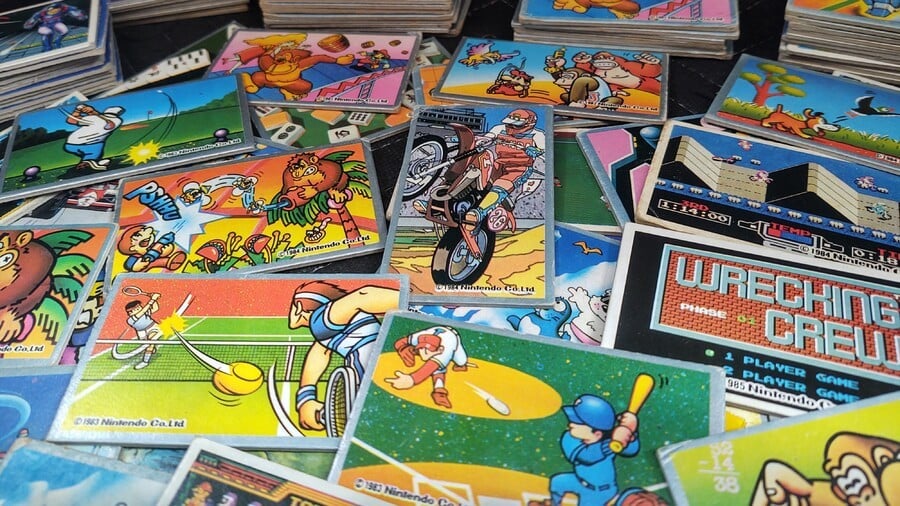
If you have ever read up on the history of Nintendo, you know that before it went into the video game business, the company began life by making cards and other novelties. The hanafuda and playing cards which Nintendo produced from its formation in 1889 took a back seat following the popularity of toys like the Ultra Hand in the 1960s, and the company would soon move into electronic games and, ultimately, arcade and video games.
But this is not to say that the company left cards behind completely. Nintendo-branded Japanese Menko cards were released in Japan in the early 1980s and collector Ben Gilmore has a sizeable colletion of these lesser-known Nintendo-branded cards. This milk cap/Pog-like tabletop game is older than Nintendo itself, and there are Nintendo Menkos with Mario designs that date from the plumber’s pre-NES arcade days.
Gilmore has just launched his site, Mario Menko, which documents these Mario and Nintendo cards. Keen to learn more about this niche part of the company’s licensing history, we caught up with him to discuss the history of Menko cards, his collection, and just how Mario comes into all this.
Nintendo Life: Starting with the basics, what are Menko cards?
Ben Gilmore: Menko cards were only released in Japan. They were made of thicker card stock and a little smaller in size compared to an American baseball card. They were collected as cards and played as a game.
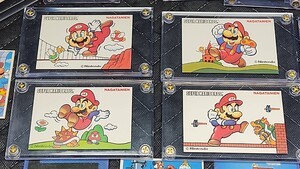
The history of Menko begins in the middle of the Edo Period (early 1700s) when Menkos were made of dried mud or clay. Paper or cardboard Menkos began in the mid-1890s. Baseball Menkos became very popular in Japan in the 1930s and ’40s, while 1945-1964 were the golden years for Sumo-related Menkos. Throughout the ’70s and early ’80s not as many Menkos were produced as children were now spending more time watching television and using electronic devices.
Menko was not just card collecting, but it was also a game. Players would put a bunch of Menkos on the ground or on a table, then you would take a card in your hand and slam it down in the hope you would flip some Menkos over. The ones you flipped over, you could keep. The one with the most Menkos at the end was the winner. Of course, there were many variations of how to play Menko, but this was the general idea.
What first attracted you to these cards?
When I first discovered these cards, I was immediately drawn to the vibrant colours and artistic elements. The other appealing aspect is the fact these were produced before the Famicom came out in 1983 and the NES in 1985. A Nintendo card of Donkey Kong and Jumpman in ‘81 and Donkey Kong Jr in ‘82 is probably something that even most Nintendo enthusiasts don’t realise exists.
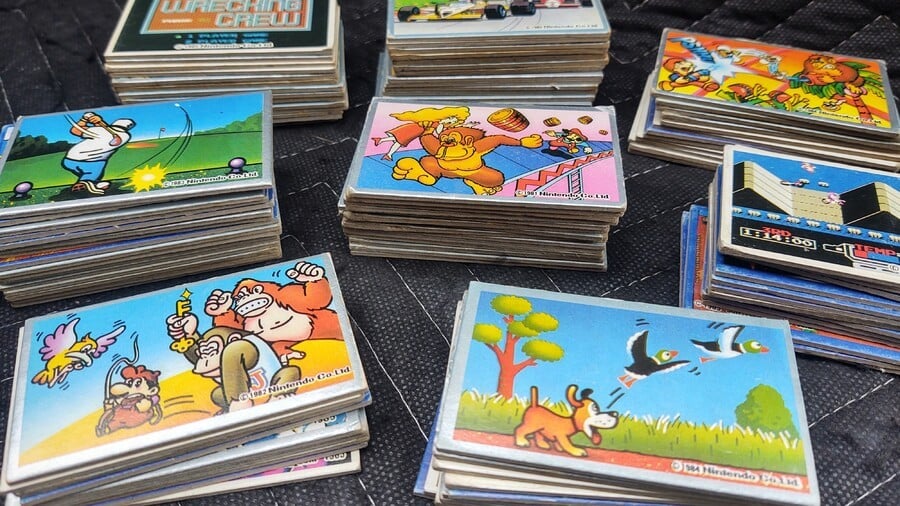
How big is your collection now?
I currently have around 200 Menkos. My collection will continue to grow, but I am picky about which cards I buy. Rather than buying large lots of cards in bad shape, I choose to wait and find the ones I want in good condition. Although there are some rare ones I’ll buy in any condition because they don’t come up for sale that often.
Could you tell us a little more about Nintendo’s relationship with Menko cards?
I know that Nintendo hired a company called Amada in the early 1980s to produce video game-related Menkos for them. In Japan, there was not good record keeping on specifics and production of Menkos, so this information is difficult to find. Even when searching Amada online, there is virtually nothing.
Along this Menko journey, I have made a few friends in Japan. They have helped me search out some specific Menkos I wanted to buy in the past. My friend Shinnosuke helped me figure out that Amada is still in business. They are currently a parent company of Ensky Plus in Japan. I have contacted them, and I hope to acquire specific information from them (things like the years they produced Menkos for Nintendo, quantities, etc.). If I’m able to get the right information from them, I’ll be able to share this with card grading companies so they can finally grade video game Menkos.
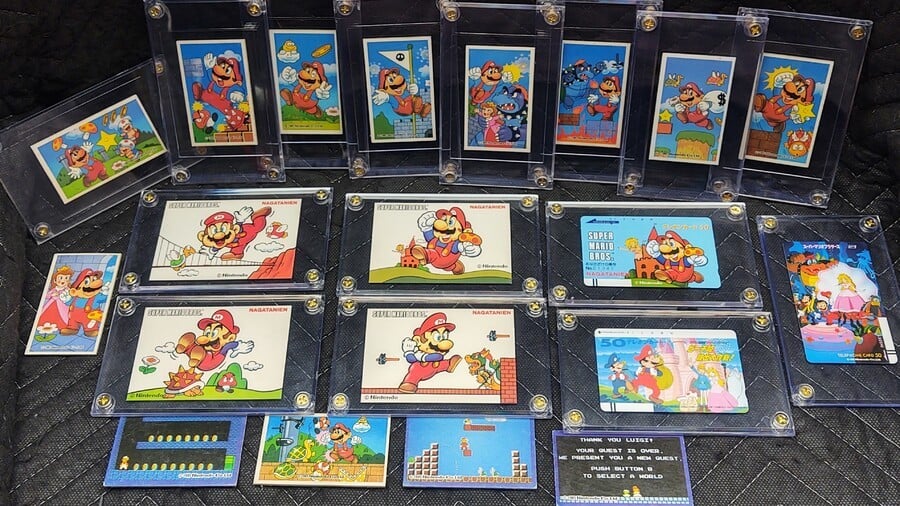
Several of these cards predate Mario’s breakout role in Super Mario Bros. When did the Nintendo mascot first enter your life and what are your fondest memories of the company’s games and consoles in the years since?
I first experienced Mario on Atari. I spent many hours playing Donkey Kong and Donkey Kong Jr. I briefly played Mario Bros. on Atari as well, but I’ll never forget my experience getting a NES. One of my friends got a Nintendo before I did sometime in 1986. I went over to see if he wanted to pass baseball and he invited me in and showed me his NES. When I saw the Zapper, I wanted to play Duck Hunt first. Shooting the ducks was fun. Even though I still wanted to shoot more ducks, he quickly shut it off and said let’s play Super Mario. I had heard about it but hadn’t played it yet. We started a two-player game, he was Mario and I was Luigi. All it took was playing World 1-1 and I was hooked for life.
We would do paper-rock-scissors to see who could be Mario. We kept playing all day and it quickly became dark outside. I didn’t want to, but I had to quit and go home before I got in trouble. I went home and told my parents about the NES and how badly I wanted one. It didn’t take long and I had a NES of my own. I was lucky to have parents that searched out the games I wanted for my birthday or Christmas. I practically had Super Mario Bros. 2, Mario 3, and Super Mario World the day they came out. I miss those video game departments from the ’80s. So much cool stuff. Anytime my mom went shopping, I went with her. If I couldn’t talk her into letting me get a game, I would at least try to get a Nintendo Power or something.
Then, on Christmas of 1989, I received the hottest toy that year, a Game Boy. After I was told to go to bed, I spent many hours under the covers playing Tetris (with a Light Boy installed, of course). There were never any more arguments with my sister on long vacations thanks to my Game Boy.
The last system I had before I left home was a Super Nintendo. I have to say I probably played Super Mario World more than any other game. The 16-bit graphics and trying to complete my map with all the secrets kept me busy for a long time. There were many Friday and Saturday nights I had friends over to spend the night. We ordered many pizzas and played Mario until 3 or 4 in the morning. Those were the days. I still have a Wii U with a lot of vintage games downloaded on it, as well as about every Mario game you can think of. But, I still have all my original vintage equipment and games — I’ll never part with them! Too many good memories and I still play them to this day. Nothing beats playing them on my 36” CRT TV.
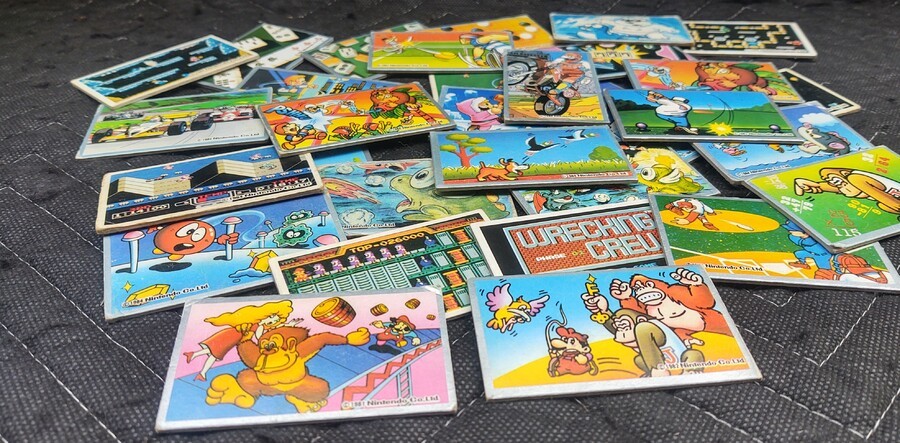
Back to Menko, the art on each card is amazing and they show how much Mario’s design changed between 1981 and 1985. Is there a particular design that you like the most and why?
It is difficult to pick only one design as I like them all. I think I can only narrow it down to Mario’s design in Mario 3 and Super Mario World. Mario 3 changed so much. Mario can now fly and all the cool suits. Same in Super Mario World. As I’ve gotten older, I find myself going back and playing the original Super Mario Bros. a lot. It’s a classic that will always be fun.
Given your passion for the retro style, what do you make of Mario’s recent design in games like Super Mario Odyssey or Mario + Rabbids?
I like the way Mario looks nowadays. He’s cool and up-to-date with the times. I’m sure as time goes on, he will continue to change and stay current. I hope Nintendo continues to not let him grow stale and always finds something new he can do. That is what has always made Mario games so fun. With that said, I still love my old-school Mario games the best.
Alongside Mario, Nintendo also licensed Menko cards to be made with images of other games like Excitebike and Duck Hunt. What do you think made these cards so appealing for Nintendo?
The colours and art almost popped off the cards. How they represented the images on the cards remained true to how they looked in the games. If you were familiar with the games, when you saw the cards, you knew exactly what it was.
How have you approached building a collection when records of each card’s production are so hard to find?
I basically buy what is appealing to me. If you buy what you like personally, most likely you will be happy with it. Over the years I have figured out which ones are rarer than others, so I always have my eyes peeled for those.
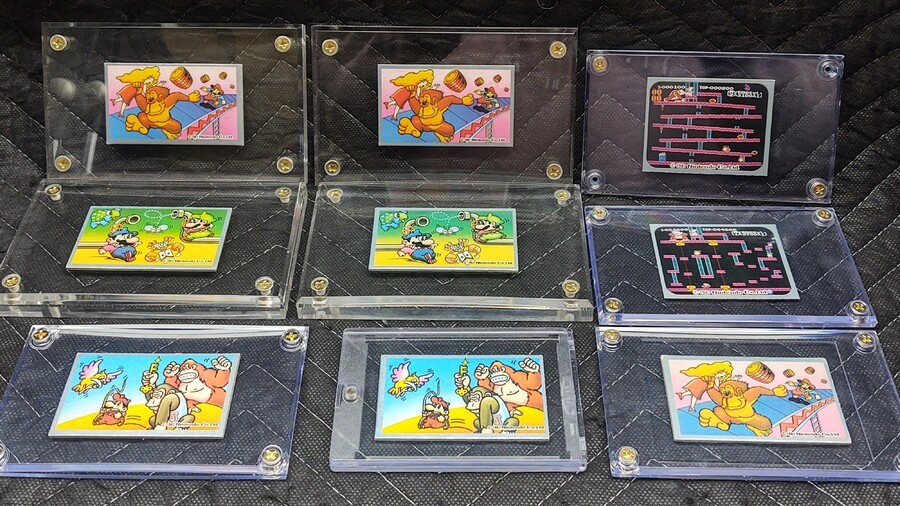
Is there a particularly rare card that you are still hoping to add to your collection?
To my knowledge, I believe I have acquired the rarest. What I am currently looking for are the pre-1985 Menkos in excellent condition. My goal is to try and find one of the ’81s, ’82s, or ’83s. Finding one that has perfect corners, surface, and [is] centered is almost impossible. I have a 1981 that is gradable, but it still isn’t what I would consider perfect. Does a perfect one even exist? Who knows! I will always be looking and my friends in Japan will be looking for me, too.
What are your favourite cards in your collection (both Nintendo-themed and otherwise)?
By far, my favourite is the 1981 Donkey Kong Menko card. It has Donkey Kong, Pauline, and Jumpman. It is the same image that is on the side of the original arcade machine. To my knowledge, this is Jumpman’s (Mario) first appearance on a trading card. This is what I consider Mario’s rookie card and the Holy Grail of Nintendo Menkos. It has taken me many years of searching to acquire the ones I have. Trying to find one in good condition is next to impossible because of how they were played with. I have been lucky and have managed to find two that are in really good shape and are worth grading once it becomes available.
The 1982 Donkey Kong Jr. card is special, too. Jumpman is now officially Mario and, for the first and last time in Nintendo history, he is a ‘villain’. This would be his first appearance on a card as Mario.
The 1983 Mario Bros. is another one of my favourites. This would be Luigi’s first appearance on a card. To my knowledge, this is the only Menko card that Mario and Luigi appear on together.
The images on these three cards are the same images that were on the arcade cabinets and on the Famicom cartridge box. In my opinion, these three cards are the most important to the historical significance of Mario and Nintendo history. There is nothing earlier than these. These were the first!
My other favourite is the 1985 Menko with Mario, Bowser, and Peach. This is the first Menko I bought. At first, I thought I bought a Mario rookie card but we now know that isn’t so — it would be a Peach and Bowser rookie card though. It’s cool to see how Mario, Luigi, Peach, Toad, and Bowser have changed their looks compared to these early pics of them.
These cards make up a niche part of Nintendo’s history. Why do you think it is important that we preserve items such as these?
These are the earliest pieces of Nintendo history that came out in the very beginning. Not only showing the success of Nintendo but commemorating those original games and the most popular mascot on planet Earth.
It is believed that the video game Menkos were not made in the same quantities as baseball cards in the US, so it is unclear how many were made and how many have survived. Due to the way the game Menko was played, I can’t imagine large quantities of the pre-1985 cards are left, let alone in good condition. These are the earliest cards produced by Nintendo, which included Mario’s rookie. This is why I feel they should be preserved.
Finding records of Menko cards seems like a tough job, how will you know when you have the full set?
I’m still waiting to find out more information from Amada in Japan. Maybe they can shed some light on how many of these cards they made. Until then, I just buy what I like or don’t have.
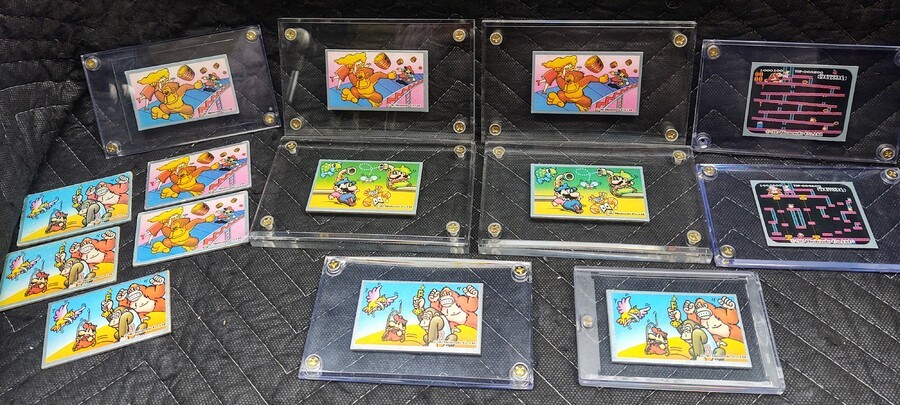
Do you have any advice for people looking to collect Menko themselves? What are the best places to buy and do you find any forgeries or reproductions on the marketplace?
Always buy what you like. If you do, you should always be happy with it. If the condition is important to you, always make sure to examine the pics of the card. If the pics aren’t that good, request better ones from the seller. Beware of bulk Menko card lots for sale. A lot of times these large lots have Menkos that have seen better days. It is possible to find good cards in decent condition in a large lot, just be cautious and those pics are important.
I remember years ago when eBay would only have two or three individual Mario Menkos listed for months on end. Nowadays there are a dozen or more pages of Nintendo Menkos. When it comes to Menkos, if you see something you like, you better get it. In the past, I have waited too long and let one pass me by. That was a grave mistake because it took several years before I saw another one come up for sale. That is a mistake I only made once.
I haven’t seen any forgeries or reproductions of Mario and Nintendo-related Menkos. Once you’ve held a Menko in your hand, you will know. Even in pictures, they are unmistakable if you are familiar with them.
This interview has been edited for clarity.
Thanks to Ben for taking the time to talk to us and share photos of his Menko collection. You can visit his site, Mario Menko, for more pictures and information on…well, Mario Menkos, of course.
